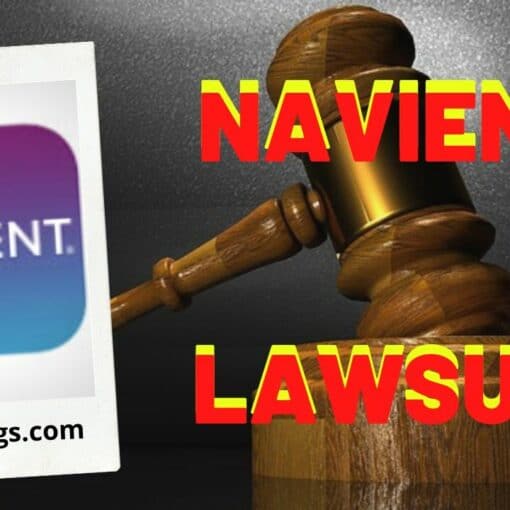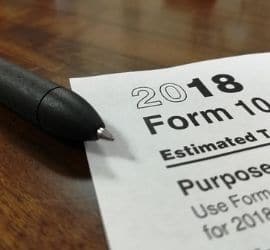How to Request a TransUnion Credit Freeze
A Credit freeze has to be set up individually with each credit bureau – Equifax, Experian and TransUnion. A credit freeze lift, or thaw also has to be done individually. The good news is that credit freezes and thaws are free. All three bureaus allow you to do this online, by mail or by phone. Here’s a step-by-step guide for freezing credit with TransUnion:
- Online
- Postal mail – In writing
- Phone
TransUnion Credit Freeze Online
You will have to set up an online account first to request your TransUnion credit freeze online. You can download and use an app to do this if you prefer. However, it is not necessary to have a TransUnion account to place a security freeze by mail or by phone. To open an account, you need to provide your name, the last four digits or your Social Security number, your address and birthdate. You will then be asked some identification questions, such as street numbers for past addresses, when credit accounts were established or approximate payment amounts on loans.
There are many monitoring products that can be purchased on the site. Be careful to sign up only for the free credit freeze, if that is what you are looking for. You should see references to a free credit freeze when you sign up for your account. Select this option to initiate your freeze and choose a PIN. If you do not choose your own PIN, one will be assigned to you anyway. DO NOT LOSE YOUR PIN NUMBER. The PIN is required to unfreeze your credit file if you want to do it by phone.
What Information Will I Need to Provide?
In order to freeze your credit, you will need to give each credit bureau information in order to prove your identity. This typically includes your:
- Name
- Previous name, if applicable
- Address
- Date of birth
- Social Security Number
You will also likely be asked some questions about prior places of residence and credit accounts you may have or have had in the past. This is all to ensure that you are actually the one requesting the freeze.
TransUnion Credit Freeze by Mail
To freeze your credit by mail, send your written request to TransUnion LLC, P.O. Box 2000, Chester, PA 19016. You will need to include your legal name, address, birthdate and Social Security number, along with copies of documents verifying your identification and address. This verification can be a copy of your driver’s license, passport, utility bills, etc. TransUnion cautions that mail is the slowest way to freeze credit. Once a freeze is in place, you will get a randomly generated PIN by return mail.
TransUnion Credit Freeze by Phone
You can initiate a Transunion security freeze by calling TransUnion toll-free: 888-909-8872. You can choose to complete the process using an automated system or opt to speak with an agent. Basic information is required. This includes full name, address, birthdate and Social Security number. To further verify your identity, you may have to answer additional questions as well. Consumers who opt for the automated system will get a randomly generated PIN. Those who speak with a live agent will be able to choose a personalized PIN.
You Need To Freeze all Three Credit Reporting Agencies
You should actively manage your credit freezes at all three major credit bureaus. Even if you freeze your TransUnion report, creditors will still be able to access your credit report at Equifax and Experian. So, you will need to repeat the steps you just took with Transunion to freeze your credit with the other two credit reporting bureaus. There is no charge to do this, just the time and inconvenience of repeating your steps.
What Freezing Your TransUnion Credit Report Will Do
Once you’ve frozen your TransUnion credit report, most other businesses can’t check your credit information. However, companies you already have an account with may still check your credit report. However, they can only check to review your existing accounts, not to create new ones. Collection agencies representing lenders you have done business with and government agencies with the appropriate court or administrative orders may also access frozen accounts. Freezing your report won’t prevent your information from being collected for credit or insurance offers for prescreen. A freeze is primarily intended to stop new applications for new lines of credit.
It’s a breeze to freeze but then what?
“You took a proactive step in protecting your personal information by freezing your credit report. According to an IPSOS survey sponsored by TransUnion, you are part of the 82% of Americans who hold themselves accountable for protecting their own data. You want control of who can access your credit report – that is why you protected yourself with a freeze. At some point though, you will want to apply for credit. No sweat. It has never been easier to unfreeze your credit report. The power is in your hands. Freezing or unfreezing your credit report does not impact your credit score. As long as you continue to manage your finances responsibly (ex. paying bills on time) your credit score can continue to improve.” (Source: https://www.transunion.com)
Transunion Credit Freeze Lift
Placing a credit freeze on your credit reports can help reduce your risk of identity theft. Still, eventually you’ll need to lift the freeze for new credit or job applications. Maybe you want to open a new credit card, finance a car or even apply for a mortgage. These things will all require a credit check. If you’re applying for a job, some employers check your credit as part of the hiring process. In cases like these, you’ll need to know how to lift a credit freeze.
Credit freezes must be lifted individually with each bureau. If you plan to make a single credit application, you may be able to find out which credit bureau will be used. Maybe you want to be approved for a car loan and the dealer plans to use Equifax. Then you can unfreeze just that one to save time and effort. Otherwise, you will need to lift the freeze individually, with each credit reporting agency. Each credit bureau will give you a unique PIN when you place a freeze on your file. You will likely need the PIN to temporarily lift or permanently remove the credit freeze.
Temporary Credit Lift vs. Permanent Credit Lift
When lifting a credit freeze, you have a choice between a temporary lift and a permanent lift.
- Temporary – A temporary lift allows creditors or companies access to your credit reports within a specific date range. This range is determined by you. This option is a smart choice because you can set it and forget it. Once the temporary lift expires, the credit freeze goes into effect again. This method will help keep you protected without you having to do anything else.
- Permanent – A permanent lift will end your credit freeze for good. As a result, your secure credit reports will be more vulnerable. A permanent credit lift is not recommended if you have any reason to be concerned about the security of your information. Obviously, something caused you to feel threatened enough to initiate a credit freeze. A permanent lift should only be considered if that threat been resolved. Otherwise, a temporary lift may be a better option.
How to Lift a Credit Freeze with Experian, Equifax & TransUnion
Experian
Experian advises its customers to use its online Freeze Center to make changes to their credit file. A credit freeze can also be lifted by phone or mail. Besides offering temporary and permanent lifts, Experian also offers a one-time PIN that can be provided to a single company or creditor. That way, the company can check your credit without your having to ask for a credit freeze lift. Here’s how to contact Experian.
- Phone: 1-888-397-3742
- Mail: Experian Security Freeze, P.O. Box 9554, Allen, TX 75013
- Website: experian.com/freeze/center.html
An important note: When changing the status of your credit freeze, Experian requires the PIN that it originally provided you when instituting the credit freeze. You’ll need it no matter which method of contact is used.
Equifax
An Equifax credit freeze can be initiated, temporarily lifted or permanently removed by creating an account on myEquifax. This account is a one-stop shop to monitor the status of your credit report. Here’s how to contact Equifax.
- Phone: 1-888-298-0045
- Mail: Equifax Information Services LLC, P.O. Box 105788 Atlanta, GA 30348-5788
- Website: equifax.com/personal/credit-report-services/
TransUnion
TransUnion offers customers an online account to initiate and make changes to a credit freeze. You can also make changes through TransUnion’s mobile app, myTransUnion. TransUnion allows you to schedule a credit freeze lift up to 15 days in advance. This scheduled lift differs from Experian’s single-use PIN in that it allows any creditor access to the credit report over the period of time that you choose.
A PIN is not required when you use the online account or myTransUnion mobile. However, a PIN is required if you’re making the request via phone. Here’s how to contact TransUnion.
- Phone: 1-888-909-8872
- Mail: TransUnion, P.O. Box 160, Woodlyn, PA 19094
- Website: transunion.com (Source: creditkarma.com)
Lost PIN? How to Unfreeze Credit Without a PIN
If you don’t have the PIN required to lift your credit freeze, there are steps you can take. You can still access your account and remove the freeze on your credit. Here’s how each of the three credit bureaus can help you lift a credit freeze with a lost PIN.
Equifax
You don’t necessarily need a PIN to freeze or unfreeze your credit with Equifax. Instead, you can use an online myEquifax account to freeze and thaw your credit report. If you set up your Equifax credit freeze without getting a PIN, you can unlock your freeze without a PIN as well. Equifax provides three ways for you to lift your credit freeze without a PIN:
- Online through myEquifax. Simply log into your myEquifax account with your username and password to lift your credit freeze.
- Over the phone. Call 888-298-0045 to answer basic identity-verification questions and lift your credit freeze.
- By mail. Send Equifax a freeze request form, along with copies of items that prove your identity (like a driver’s license or utility bill), to place or lift a credit freeze.
Experian
Experian still provides PINs to consumers who want to freeze their credit. When you use the Experian Freeze Center to freeze your credit, you can either choose your own PIN or have a PIN assigned to you. An Experian PIN is between 5 and 10 digits. You will need your PIN if you want to thaw your credit report with Experian. But, if you freeze your credit and lose the PIN, you can use Experian’s online PIN request form to get your PIN sent to you.
Once you fill out the PIN request form, it does not take long to get your PIN from Experian. Assuming you answer the identity verification questions correctly, you’ll receive your PIN immediately. You can also deal with Experian customer service by phone – call 888-397-3742. The number is helpful if you have additional questions, need help with a lost PIN or don’t want to use the online form.
TransUnion
Like Equifax, TransUnion allows you to create an online account. You can freeze and unfreeze your credit online. You can also download the myTransUnion mobile app through Apple or Google Play). TransUnion asks you to create a 6-digit PIN during the credit freeze process. However, you only need to provide this PIN if you want to lift your credit freeze by phone. Contact TransUnion at 888-909-8872
You do not need a PIN to unfreeze your TransUnion credit report online. You can still unfreeze your credit as long as you have the name and password to access your TransUnion account. If you lose your TransUnion PIN and want to keep your account secure, simply log into your TransUnion online account to create a new PIN. You do not need to provide your old PIN before creating a new one. Also, you can set up a new PIN or change it as often as you like. (Source: bankrate.com)
Reporting Problems With Your Credit Freeze
All three credit reporting bureaus are legally required to freeze your credit report at your request, at no charge. However, you can submit a complaint if you believe one of these agencies is not placing the credit freeze properly. Complaints can be registered with the Consumer Finance Protection Bureau online or by calling 855-411-2372.
FAQs
How long does it take before your credit freeze is activated? The Federal Trade Commission (FTC) says that the agency must activate the freeze within one business day if you freeze your credit online or by phone. If you request online that your credit by thawed, the agency must lift the freeze within one hour. If requested by phone, it must be lifted within three business days, according to the FTC.
Will freezing my credit hurt my credit score? No. Freezing your credit will not hurt you credit score at all.
Does freezing my credit affect my existing credit cards? No, freezing your credit has no effect on your existing credit cards. You will still be able to use them as you always have. However, if you want to request a credit line increase from your credit card company, you may need to unfreeze your credit.
Can I still apply for a loan or new line of credit with a credit freeze? Yes, but you’ll have to unfreeze your credit temporarily to allow access for the new inquiry.
What’s the difference between a credit freeze and credit lock? There’s a big difference. A credit lock usually costs money in most cases and should not be necessary if you freeze your credit.
- Fraud alerts encourage lenders and creditors to take extra steps to confirm your identity before issuing you credit
- Credit report locks can help restrict access to your credit
- Security freezes must be placed separately at each of the three nationwide credit bureaus
What is a Fraud Alert?
A fraud alert is a notice that is placed on your credit reports. It alerts credit card companies and others who may extend you credit that you may have been a victim of fraud or identity theft. It is a notification that makes companies take extra steps to verify your identity before extending credit in your name.
You may request a fraud alert from any of the three nationwide credit bureaus — Equifax, Experian and TransUnion. Once you place an alert with one of the bureaus, that bureau will send your request to the other two. Fraud alerts can be placed on your credit reports for free, and there are two different types:
Initial One Year Fraud Alert
An initial (one-year) fraud alert can be placed if you believe you are or may become a victim of fraud or identity theft. The fraud alert lasts for one year. If you want to keep it active on your credit reports, you’ll need to renew it each year. When you or someone else attempts to open an account in your name, the creditor must take reasonable steps to verify that it is really you. These steps will also occur if you make changes on an existing account, such as increasing the credit limit.
Verification can be as simple as contacting you by phone at a number you provide, before completing the request. Placing an initial fraud alert also allows you to request a free copy of your credit reports every 12 months. This is in addition to the one free copy from each credit bureau you’re entitled to under the Fair Credit Reporting Act.
Extended Fraud Alert
An extended fraud alert can be placed if you are a victim of fraud or identity theft. It requires a copy of a valid police or law enforcement agency report, or a Federal Trade Commission Identity Theft Report. An extended fraud alert is similar to an initial fraud alert, but lasts for 7 years. With an extended fraud alert, a lender or creditor is required to verify your identity in person or by phone at a number you provide before opening new accounts or making changes to existing accounts.
“If you have an extended fraud alert on your credit reports, you are allowed to request two free credit reports every 12 months from the three nationwide credit bureaus (Equifax, Experian and TransUnion). In addition, your name is removed from pre-screened credit card or insurance offers for 5 years. If you are on active military duty and want to help minimize your risk of fraud or identity theft while you are deployed, an active duty alert is available to you. The active duty alert is similar to an initial fraud alert: companies must take reasonable steps to verify your identity before opening new accounts in your name or modifying existing ones. An active duty alert lasts for one year, and your name is removed from pre-screened credit card or insurance offers for 2 years.” Source: https://www.equifax.com
What is a Credit Report Lock?
A credit report lock or credit lock has the same impact on your credit reports as a security freeze. However, they aren’t exactly the same thing. Credit report locks are mobile app-enabled and allow you to lock and unlock your credit reports using identity verification techniques such as usernames, passwords, and Touch ID or Face ID technology. You must lock your credit reports separately at each nationwide credit bureau – Equifax, Experian and TransUnion. (Source: equifax.com)






4 thoughts on “TransUnion Credit Freeze Lift – How to Thaw a TransUnion Security Freeze”
ive got a freeze on my account that i didnt put there this is wrong i dont have an account with them.
Once you have a freeze on transunion, without your pin you can not get it off. I have worked for days to get a freeze off.
Be beware of ever doing such a thing.. I need help getting it off.
I could not locate my pin for TransUnion & tried repeatedly to contact them by phone. However, clicking on your underlined link above for TransUnion Credit Freeze Lift easily got me into the site & onto the page that I needed. Within one minute I was able to authenticate my identity & lift the security freeze. Reading & following the article word for word, I didn’t have sign up for a $24.95 per month service that I didn’t need.
Thank you for this clearly written article that resolved my Credit Freeze Lift Issue with TransUnion.
Hi Joan – I’m glad the information helped. Cheers!